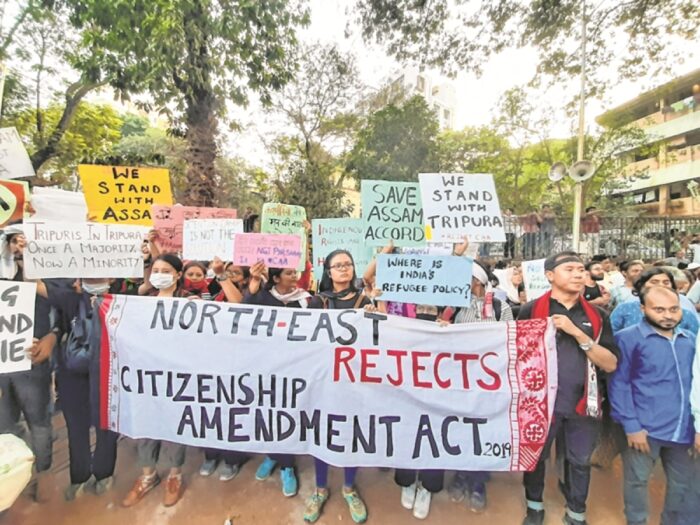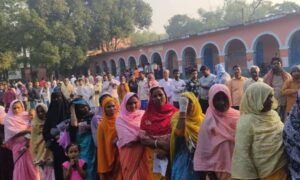
File Picture
Guwahati based Assam Tribune reported on 17th July, 2020 that the statutory 6 month period for making the Rules to operationalize the Citizenship Amendment Act had expired on 18th June this year. This means that the Ministry of Home Affairs which piloted the Act will now have to seek the approval of the Honble Speaker of the Lok Sabha for extension of 6 months for preparing the Rules . This entails first drafting the Rules and submission of the same before the Parliamentary Committee on Subordinate legislation responsible for scrutiny of the Rules for ensuring that the Rules proposed are in conformity with the Act ;and upon receipt of clearance of the Committee, the Rules will have to be laid in both the houses of the Parliament. Presently the 15 member Committee is headed by Raghu Ramakrishna Raju Kanumuru,the Honble MP from the YSR Congress. It is evident that this process will take time.
The avoidable delay in making the Rules has produced mixed reaction in the East and the north east because it is here that the Citizenship Amendment Act had been opposed as well as well received for area specific complex reasons. This compelled the Centre to exclude from the purview of the CAA (a) the states covered by the Inner Line Permit system , namely, Arunachal Pradesh, Nagaland, Mizoram and Manipur( b) All Sixth schedule areas meaning the whole of Meghalaya and the 3 Sixth schedule Districts of Assam and Tripura Tribal Areas Autonomous District Council.
However, in the Brahmaputra valley of Assam, the sentiments against the CAA are strong as the ethnic Assamese fear that the CAA will enable many Bengali Hindus to gain citizenship now and in future which will reduce further the proportion of the Assamese speaking in the state already brought down to about 48.8 % of the population as per 2011 Census. On the other hand, in the 3 Barak valley Districts of Assam which were” transferred” to Assam when Assam was carved out of Bengal Presidency in 1874, the support to the CAA is obviously strong as the BJP has been able to wean away a large number of Bengali Hindus – as in Tripura from Congress and the Left. In West Bengal though the ruling Trinamool Congress has been opposed to the CAA on the specious secular ground, there is strong support to the CAA among the vast majority of Bengal’s population of the ” victims of Partition” meaning persons who sought refuge and continue to do so because of persecution in the then East Pakistan and now Bangladesh. The Matua community of East Bengal refugees is one such group , now living in South Bengal and strongly endorsing the CAA and the BJP line in West Bengal. This is because of a perception among many in Bengal and Assam that withdrawal of protection given to the Hindu minorities of East Pakistan seeking shelter in India after emergence of Bangladesh such as the protective provisions under the Immigrants ( expulsion from Assam) Act 1950 by the successive Governments under the Congress caused huge and continuing hardships which are now only being addressed by the Citizenship Amendment Act. This is a strong constituency of the BJP in Bengal, Assam and Tripura.
In this background, the Centre’s apparent “go slow”in regard to the implementation of the CAA might even be a tactical move to wear out the anti CAA agitation which has now lost space to the Pandemic and keep it in this position till the state elections in Bihar, Assam and Bengal. In Assam, Sonowal- Himanta Biswa Sarma led BJP Government has secured a firm base by effectively dealing with Pandemic, floods, and the migrant workers problem which have put the issue of citizenship on the back burner in Assam. From this perspective, the ” slow down” might as well be a move in the right direction.
[the_ad id=”22718″]


















